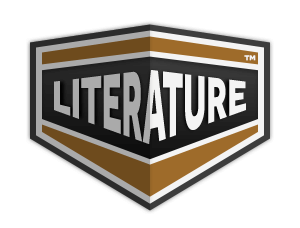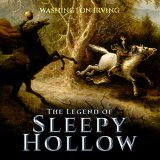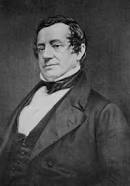The Legend of Sleepy Hollow Page #2
"The Legend of Sleepy Hollow" is a gothic story by American author Washington Irving, contained in his collection of 34 essays and short stories entitled The Sketch Book of Geoffrey Crayon, Gent.. Written while Irving was living abroad in Birmingham, England, "The Legend of Sleepy Hollow" was first published in 1820.
Genre: Fiction
Genre: Fiction
- Year:
- 1820
- 813 Views
in Sleepy Hollow, for the purpose of instructing the children of the vicinity. He was a native of Connecticut, a State which supplies the Union with pioneers for the mind as well as for the forest, and sends forth yearly its legions of frontier woodmen and country schoolmasters. The cognomen of Crane was not inapplicable to his person. He was tall, but exceedingly lank, with narrow shoulders, long arms and legs, hands that dangled a mile out of his sleeves, feet that might have served for shovels, and his whole frame most loosely hung together. His head was small, and flat at top, with huge ears, large green glassy eyes, and a long snipe nose, so that it looked like a weather-cock perched upon his spindle neck to tell which way the wind blew. To see him striding along the profile of a hill on a windy day, with his clothes bagging and fluttering about him, one might have mistaken him for the genius of famine descending upon the earth, or some scarecrow eloped from a cornfield. His schoolhouse was a low building of one large room, rudely constructed of logs; the windows partly glazed, and partly patched with leaves of old copybooks. It was most ingeniously secured at vacant hours, by a withe twisted in the handle of the door, and stakes set against the window shutters; so that though a thief might get in with perfect ease, he would find some embarrassment in getting out,--an idea most probably borrowed by the architect, Yost Van Houten, from the mystery of an eelpot. The schoolhouse stood in a rather lonely but pleasant situation, just at the foot of a woody hill, with a brook running close by, and a formidable birch-tree growing at one end of it. From hence the low murmur of his pupils’ voices, conning over their lessons, might be heard in a drowsy summer’s day, like the hum of a beehive; interrupted now and then by the authoritative voice of the master, in the tone of menace or command, or, peradventure, by the appalling sound of the birch, as he urged some tardy loiterer along the flowery path of knowledge. Truth to say, he was a conscientious man, and ever bore in mind the golden maxim, “Spare the rod and spoil the child.” Ichabod Crane’s scholars certainly were not spoiled. I would not have it imagined, however, that he was one of those cruel potentates of the school who joy in the smart of their subjects; on the contrary, he administered justice with discrimination rather than severity; taking the burden off the backs of the weak, and laying it on those of the strong. Your mere puny stripling, that winced at the least flourish of the rod, was passed by with indulgence; but the claims of justice were satisfied by inflicting a double portion on some little tough wrong-headed, broad-skirted Dutch urchin, who sulked and swelled and grew dogged and sullen beneath the birch. All this he called “doing his duty by their parents;” and he never inflicted a chastisement without following it by the assurance, so consolatory to the smarting urchin, that “he would remember it and thank him for it the longest day he had to live.”
Translation
Translate and read this book in other languages:
Select another language:
- - Select -
- 简体中文 (Chinese - Simplified)
- 繁體中文 (Chinese - Traditional)
- Español (Spanish)
- Esperanto (Esperanto)
- 日本語 (Japanese)
- Português (Portuguese)
- Deutsch (German)
- العربية (Arabic)
- Français (French)
- Русский (Russian)
- ಕನ್ನಡ (Kannada)
- 한국어 (Korean)
- עברית (Hebrew)
- Gaeilge (Irish)
- Українська (Ukrainian)
- اردو (Urdu)
- Magyar (Hungarian)
- मानक हिन्दी (Hindi)
- Indonesia (Indonesian)
- Italiano (Italian)
- தமிழ் (Tamil)
- Türkçe (Turkish)
- తెలుగు (Telugu)
- ภาษาไทย (Thai)
- Tiếng Việt (Vietnamese)
- Čeština (Czech)
- Polski (Polish)
- Bahasa Indonesia (Indonesian)
- Românește (Romanian)
- Nederlands (Dutch)
- Ελληνικά (Greek)
- Latinum (Latin)
- Svenska (Swedish)
- Dansk (Danish)
- Suomi (Finnish)
- فارسی (Persian)
- ייִדיש (Yiddish)
- հայերեն (Armenian)
- Norsk (Norwegian)
- English (English)
Citation
Use the citation below to add this book to your bibliography:
Style:MLAChicagoAPA
"The Legend of Sleepy Hollow Books." Literature.com. STANDS4 LLC, 2024. Web. 25 Apr. 2024. <https://www.literature.com/book/the_legend_of_sleepy_hollow_261>.




Discuss this The Legend of Sleepy Hollow book with the community:
Report Comment
We're doing our best to make sure our content is useful, accurate and safe.
If by any chance you spot an inappropriate comment while navigating through our website please use this form to let us know, and we'll take care of it shortly.
Attachment
You need to be logged in to favorite.
Log In